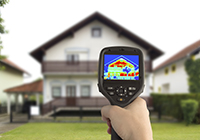 ROOF Surveys
ROOF Surveys
Roof Maintenance in General
Waterproofing problems manifest themselves in two ways: Leakage and entrained moisture contamination. Leakage is pretty simple, although the leak inside the building rarely directly relates to the exact spot on the roof, since the water flows down the slope of the roof to a spot that is not sealed and into the building at that point. Most leaks occur where the waterproofing is sealed or where there is a penetration of the roof. Since most types of roof systems absorb some amount of water, it is harder to find the exact spot of water contamination in the insulation because it may not leak into the building until it has absorbed all the water it can hold.
electrical / Mechanical
Infrared inspections can reveal electrical and or mechanical system failures before they occur. In most cases, the cost of a themal imaging survey is a mere fraction of the cost if a system goes unnoticed until it fails. Get more details on our Infrared Electrical Inspection Services here.
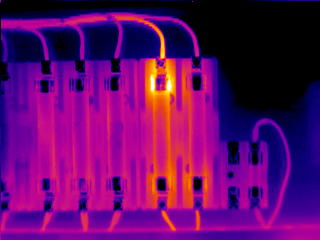 |
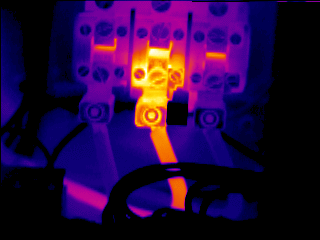 |
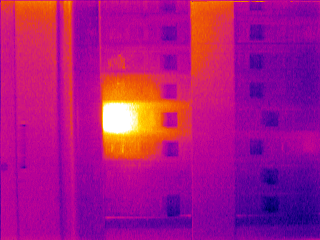 |
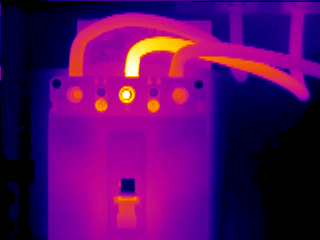 |
FUSE CLIPS are vulnerable to failure because they depend on spring tension for their electrical integrity. Even heating a clip to as little as 200°F for a month causes it to lose that spring tension, resulting in a trend toward rapid declining failure.
Contact Us Today! |
CENTER PHASE load side of this heater overload block is too warm! It could be a loose connection at either the heater or the conductor just below.With infrared thermography you cannot predict the exact time until failure. But one thing is sure - this connection is headed toward failure. |
PANEL CIRCUIT BREAKER is hot! Is it a problem? Without a load reading, diagnosis is difficult. This may be the only energized breaker in the entire panel. |
"B" PHASE of this breaker appears to have a poor connection. This "connection type pattern" is one of the two classic patterns typically seen during electrical inspections. It can be diagnosed as a connection pattern because as you move away from the connection, which is the hottest point (partially obscured by the breaker), the heat dissipates. Further away from the point of high resistance the conductor is the same approximate temperature as the other two phases. |